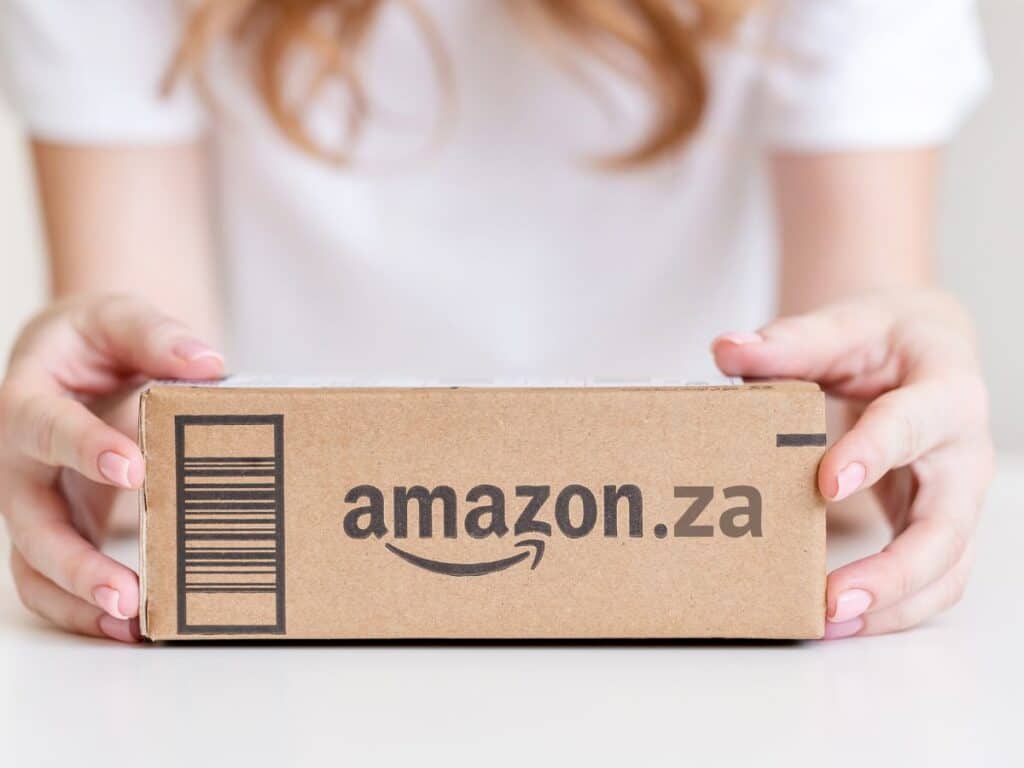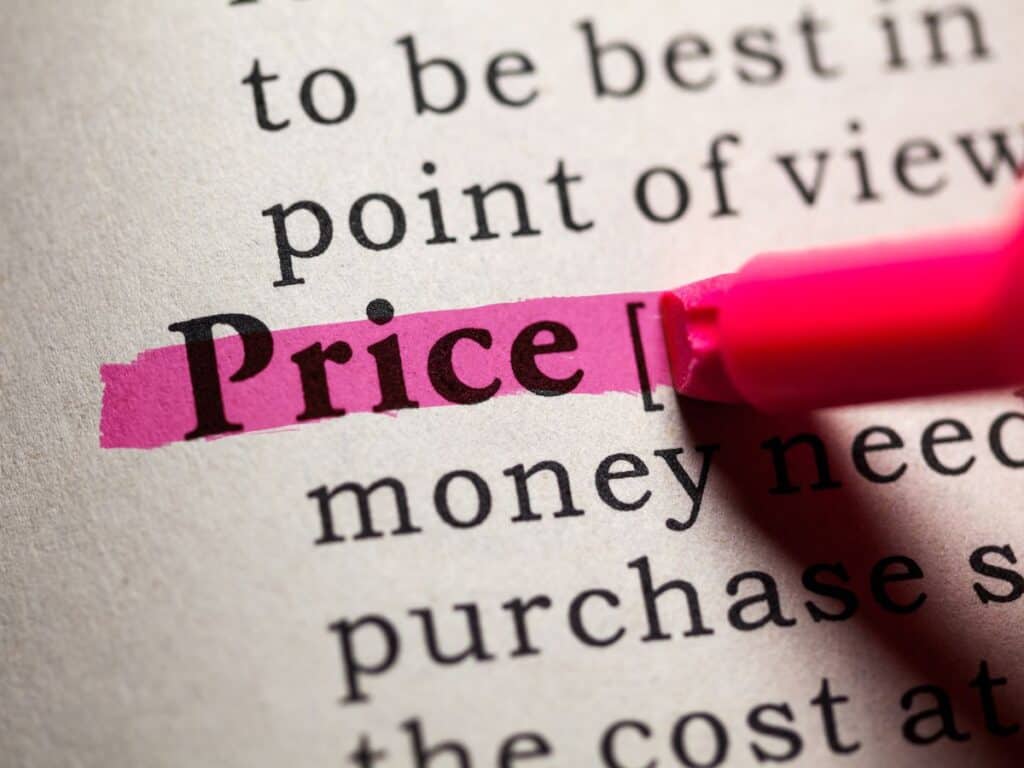If you’re reading this, chances are you’re thinking about starting your own Amazon adventure or perhaps giving your existing online business a hefty boost. Either way, you’ve come to the right place. As someone who’s navigated the choppy waters of e-commerce, I’m here to share some wisdom, anecdotes, and a sprinkle of humor to help you select the perfect products to sell on Amazon from our beautiful Rainbow Nation.
It’s probably best to start with the biggest question most online sellers in South Africa have about Amazon…
How to choose the right products to sell on Amazon in South Africa?
Research market demand using tools like Jungle Scout, consider unique South African trends and cultural products, assess competition, ensure profitability by calculating costs, and comply with Amazon’s policies and local regulations.
As simple as that sounds, there is a LOT that goes into it. Let’s delve a bit deeper…

Understanding the Amazon Marketplace in South Africa
First things first, let’s talk about Amazon. It’s not just a river or a rainforest; it’s the e-commerce giant that’s made its way into almost every online shopper’s heart. But before you dive in, it’s crucial to understand the landscape. Amazon is like the Table Mountain of online retail—massive, majestic, and a bit intimidating at first glance.
Why Amazon in South Africa?
Now, you might wonder, “Why should I sell on Amazon from South Africa?” Well, imagine having access to millions of customers who trust and frequent Amazon daily. It’s like opening your shop in the V&A Waterfront, but on a global scale.
Plus, with Amazon making moves in South Africa, the timing couldn’t be better to get on board.
The Right Tools for the Job: Unveiling Your Product Research Arsenal
Diving into the Amazon marketplace without the right set of tools is like trying to find a needle in a haystack—blindfolded. To uncover those hidden gems (read: products with high demand and low competition), you’ll need a robust arsenal of product research tools.
Think of these tools as your GPS through the Amazon jungle, guiding you towards products ripe for the picking.
Jungle Scout and Helium 10 aren’t just fancy names; they’re the Swiss Army knives of Amazon product research. They help you slice through the data, giving you insights into what products are flying off the virtual shelves and which ones are just gathering digital dust. These tools show search volumes, competition levels, and even profit estimates. Imagine knowing the potential profitability of a product before you even start selling. It’s like having a crystal ball, but for e-commerce.
But here’s a pro tip: don’t just rely on these tools blindly. Use them as a starting point. Dive deeper into customer reviews, question-and-answer sections, and competitor listings. This extra step can unveil a wealth of information about customer pain points and unmet needs. Remember, the goal is to find a product that not only sells but also solves a real problem for your customers.
Local Flavors: Tapping Into the South African Heartbeat on Amazon
When selecting products to sell on Amazon from South Africa, it’s crucial to understand and embrace the local flavors. South African consumers have unique tastes and preferences shaped by a rich cultural tapestry. This local insight can be your golden ticket to standing out in a crowded marketplace.
Consider products that resonate with the South African lifestyle and traditions. For example, outdoor cooking and braais are not just about food; they’re a national pastime. Products that enhance this experience, like innovative braai accessories or eco-friendly fire starters, could strike a chord with local consumers.
Moreover, South Africa’s diverse heritage offers a palette of opportunities for products inspired by local art, fashion, and beauty trends. From Afrocentric home decor to rooibos-infused skincare products, tapping into the local essence can set your brand apart and create a loyal customer base. Remember, authenticity sells. Products that genuinely reflect and celebrate South African culture can resonate more deeply with customers, creating an emotional connection that goes beyond just a transaction.
Evaluating Your Competition: The Art of Standing Out
Before you jump headfirst into the Amazon pool, it’s wise to check out who’s already swimming in your lane. Evaluating your competition is not about getting intimidated; it’s about finding your unique selling proposition (USP) that makes your product the obvious choice for customers.
Start by analyzing the top sellers in your chosen niche. Look at their product listings, customer reviews, and pricing strategies. What are they doing well? More importantly, where are they falling short? This is where you can swoop in and fill the gap. Perhaps it’s better product quality, more attractive packaging, or superior customer service.
Consider also the power of branding. In a sea of generic products, a well-crafted brand story can be the lifebuoy that keeps your business afloat. Build a brand that speaks to your target audience, one that tells a story they want to be part of. Whether it’s sustainability, luxury, or innovation, let your brand’s ethos be the beacon that guides customers to your products.
Finally, keep an eye on emerging trends and shifts in consumer behavior. The e-commerce landscape is ever-changing, and what works today might not work tomorrow. Stay agile, stay informed, and be ready to pivot your strategy to stay ahead of the competition. Remember, in the vast Amazon marketplace, it’s not always the biggest sellers that win but the smartest.
By marrying the right tools with a deep understanding of local flavors and a keen eye on your competition, you’re setting the stage for a successful Amazon venture from South Africa. It’s about finding the perfect blend of data-driven decisions, cultural relevance, and strategic differentiation. With these elements in your corner, you’re not just selling products; you’re creating a brand that resonates, stands out, and ultimately, sells.
How To Source Products To Sell On Amazon In South Africa
Finding Suppliers: The Quest for Your Perfect Match
Embarking on the quest to find the right supplier is akin to seeking out the ideal partner for a long-term relationship. It’s about finding a balance between reliability, quality, and cost-effectiveness. Your supplier is not just a source for your products; they’re a pivotal part of your business’s foundation. Therefore, choosing wisely is non-negotiable.
The journey often begins on platforms like Alibaba, a veritable marketplace that connects you with suppliers from across the globe. Yet, navigating Alibaba can feel like trying to find your way through the bustling streets of a foreign market.
Each turn offers new possibilities, and every vendor promises the best. Here’s where strategic filtering becomes your best friend. Look for suppliers with high ratings, positive reviews, and a track record of working with international sellers. These are your signposts towards a trustworthy partnership.
But don’t stop there. Reach out to potential suppliers and start a conversation. This interaction is crucial—it’s where you gauge their responsiveness, willingness to collaborate, and flexibility.
Remember, a good supplier is interested in your business’s success because it mirrors their own. Ask for samples, because nothing beats hands-on experience with the product you’re planning to sell. It’s like a first date; you’re getting to know each other, and figuring out if you’re a good fit.
Consider also the benefits of local sourcing. South Africa is rich in unique products and materials that can set your offerings apart on the global stage. Local suppliers can offer shorter lead times and lower shipping costs, which are instrumental in agile business operations. Plus, supporting local businesses can become a part of your brand’s narrative, appealing to socially conscious consumers.

The Logistics Dance: Navigating the Path from Amazon Warehouse in South Africa to Customer
Once you’ve secured your products, the next challenge is the logistics dance—the intricate steps of moving your products from the warehouse to your customers’ hands. This dance involves more than just a simple box step; it’s a tango of timing, coordination, and precision.
Fulfillment by Amazon (FBA) often leads the rhythm in this dance. Opting for FBA means Amazon takes care of storage, picking, packing, and shipping. It’s like having a dance partner who knows all the moves, allowing you to focus on the music.
However, FBA comes with its own set of rules and fees. Understanding these intricacies is crucial to ensuring your performance on the floor is flawless.
But before your products can even reach Amazon’s stage, they must first clear the hurdles of customs and import regulations. This part of the dance can feel like a complex choreography, with steps that must be executed perfectly to avoid costly missteps.
Partnering with a reliable freight forwarder can be a game-changer here. They’re the choreographers behind the scenes, ensuring that every leap and turn is executed with precision, from customs clearance to final delivery.
Let’s not forget the importance of planning for returns. In the e-commerce dance, not every move will be perfect. Returns are an inevitable part of the routine, but they don’t have to trip you up.
Planning a smooth returns process, especially with FBA, ensures that your dance remains graceful, keeping your customers satisfied and ready to dance again.
Navigating the logistics dance requires patience, attention to detail, and sometimes, the ability to pivot gracefully when things don’t go as planned. It’s about finding the right partners, understanding the rhythm of e-commerce, and always keeping your eyes on the prize—delighted customers and a thriving business.
Together, finding the right suppliers and mastering the logistics dance form the backbone of your Amazon venture. Like any great performance, success lies in preparation, practice, and the courage to step onto the floor with confidence. With each step mastered, you’re not just selling products; you’re crafting an experience that customers will come back to, time and time again.
Profitability and Pricing Strategy When Selling on Amazon In South Africa: Mastering the Art of the Deal
When it comes to selling on Amazon, or any platform for that matter, setting the right price for your products is akin to finding the perfect pitch in a symphony—it must harmonize with customer expectations and market dynamics while still hitting the high notes of profitability.
This delicate balance is where the art of the deal truly lies. It’s not just about covering costs; it’s about maximizing value in the eyes of your customers and ensuring your business sings a tune of sustainable success.
Crunching the Numbers
Before you even think about slapping a price tag on your products, you need to dive deep into the numbers. This isn’t just a quick glance at your costs and adding a markup; it’s a thorough analysis that considers every variable in your financial equation. From manufacturing costs, shipping fees, customs duties, to Amazon’s cut—every Rand and cent counts.
But here’s where many budding entrepreneurs might miss a beat: hidden costs. These are the sneaky expenses that aren’t always obvious at the outset. Think marketing, branding, returns processing, and even storage fees, especially if you’re using Fulfillment by Amazon (FBA).
I learned this lesson the hard way when I first started selling. My initial calculations were optimistic, to say the least. It wasn’t until I accounted for every possible expense that I realized my “profitable” product was barely breaking even.

Setting the Right Price For Your Product On Amazon In South Africa
With a clear understanding of your costs, it’s time to set your prices. But how do you find that sweet spot where customers feel they’re getting value while your margins are healthy? Market research is key. Look at your competitors: What are they charging? Can you justify a higher price with better quality or added value?
Remember, pricing is not just a numbers game; it’s a psychological one. Pricing your product just below a round number, say R299.99 instead of R300, can make a significant difference in consumer perception of value. It’s a small tweak that can lead to better conversion rates.
Then there’s the strategy of price skimming versus penetration pricing. When I launched my first exclusive product on Amazon, I opted for a skimming approach—setting a higher price initially to recover the investment quickly, then gradually reducing it to capture a broader market. This strategy can be particularly effective for innovative products or those with a unique selling proposition.
Adapting and Optimizing Your Amazon Product Listings
The world of e-commerce is as dynamic as a Cape Town weather forecast—constantly changing. That means your pricing strategy needs to be flexible. Keep a close eye on sales performance, market trends, and customer feedback. Sometimes, a slight adjustment in price can lead to a significant uptick in sales volume, offsetting a smaller margin per unit with greater overall profitability.
Moreover, consider seasonal fluctuations and special shopping events like Black Friday or Cyber Monday. These are opportunities to adjust your pricing strategy to capture more sales, clear inventory, or even test new price points.
In essence, mastering your profitability and pricing strategy is about understanding the full scope of your costs, setting prices that reflect the value you offer, and staying agile in a competitive marketplace. It’s a continuous dance of analysis, adjustment, and optimization—a dance that, when done right, leads to a profitable and sustainable business. And remember, in the grand scheme of your Amazon venture, pricing is not just a tag on your product; it’s a reflection of your brand’s value proposition and a crucial lever in driving your business’s success.
Regulatory Compliance and Restrictions: Navigating the Amazon Maze In South Africa
As a South African entrepreneur ready to take on the Amazon marketplace, understanding and adhering to regulatory compliance and restrictions is akin to learning the rules of rugby before stepping onto the field. It’s not just about playing the game; it’s about playing it right to avoid unnecessary penalties that could sideline your business.
Playing Amazon’s Rules In South Africa
Amazon, with its global reach and vast customer base, operates under a complex set of rules designed to protect consumers, sellers, and the platform itself. These rules cover everything from product safety standards to intellectual property rights. For instance, certain products that are legal and popular in South Africa might face restrictions on Amazon due to international laws or Amazon’s own policies.
One common hurdle I’ve seen South African sellers encounter involves the import regulations of various countries. Products that contain certain materials or ingredients, like some traditional African herbal supplements, may be restricted or require special documentation.
It’s crucial to research these regulations thoroughly for each market you plan to enter. I learned this the hard way when a batch of products was held up at customs because I overlooked a minor compliance requirement. It was a frustrating delay that taught me the importance of meticulous attention to regulatory details.
Moreover, Amazon has strict policies on product listings and copyright infringement. Ensure your product images and descriptions are not only captivating but also compliant. A fellow South African entrepreneur once faced a temporary suspension for using copyrighted material in a listing without realizing it. The lesson? When in doubt, create your own content or get explicit permission.
Building Your Brand on Amazon: Crafting Your Digital Legacy
In the vast ocean of Amazon sellers, building a strong brand is your lighthouse, guiding customers to your products amidst the waves of competition. It’s not just about selling; it’s about creating an identity that resonates with your audience, turning one-time buyers into loyal advocates.
Brand Registry and Customer Engagement
Amazon’s Brand Registry program is a powerful tool for protecting and enhancing your brand on the platform. It grants you control over your product listings, helps prevent counterfeit issues, and gives access to enhanced marketing features.
Think of it as your brand’s VIP pass in the Amazon ecosystem. Getting registered can be a process, but it’s worth the effort for the credibility and control it offers. I’ve guided several South African brands through this process, and the common denominator in their success was a clear, well-documented brand ownership and a commitment to quality.
But building your brand doesn’t stop at registration. Engaging with your customers through thoughtful product descriptions, responsive customer service, and savvy use of Amazon’s promotional tools can turn casual browsers into loyal customers.
Remember, every interaction with a customer is an opportunity to reinforce your brand values. Whether it’s through the quality of your products, the tone of your responses, or the way you handle issues, these moments build your brand’s reputation.
For example, a South African entrepreneur I worked with decided to include a small, personalised thank you note in each order. This simple gesture, aligned with their brand’s focus on community and connection, resulted in a notable increase in positive reviews and repeat customers. It’s a testament to the power of building a brand that extends beyond the product itself and touches the hearts of customers.
Embarking on your Amazon journey from South Africa is like setting off on a game drive in the Kruger. There will be exhilarating highs, a few bumps along the road, and maybe even an elephant or two blocking your path. But with the right product, a dash of determination, and a sprinkle of savvy, you’ll be on your way to building a thriving online business.
Remember, the key to success on Amazon isn’t just about what you sell but how you sell it. So, put on your entrepreneurial hat, roll up your sleeves, and dive into the exciting world of Amazon selling. The opportunities are as vast as the African bush, and who knows, your product might just be the next big thing to hit the Amazon marketplace.
And hey, if you ever feel lost or overwhelmed, remember that every successful Amazon seller was once where you are now—standing on the edge of something great, ready to take the plunge. So, go ahead, make your mark, and who knows, maybe I’ll be buying your product on Amazon soon.
Happy selling, and cheers to your success on Amazon from South Africa!
